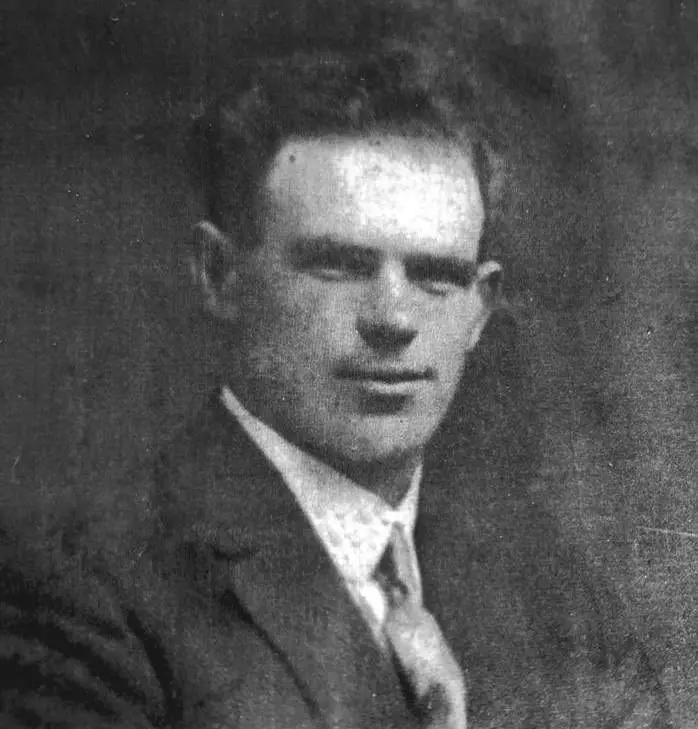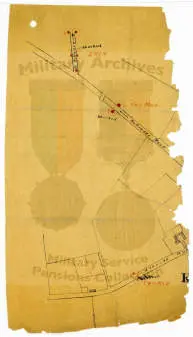

On the night of Friday, 15 April 1921, a well-known solicitor from Mullingar left the apparent peace and quiet of Kinnegad and was heading for home via Griffinstown, near Coralstown, when what seemed like an ordinary evening took an unexpected turn.
It was 11.30 at night, and in times of limited motorised traffic, John E. Wallace and his driver had little reason to expect anything out of the ordinary along the main Dublin-Mullingar road – until their car was brought to a halt by an unexpected thud.
Barrelling over an unseen obstacle, Wallace’s driver did well to hold his nerve and stop the vehicle from flipping over and violently discarding its occupants. The front of the car was badly damaged, and when the two men emerged, they realised that they had hit a tree trunk which had been uprooted and cast across the road.
The now stranded Wallace returned to Kinnegad and spent the night there while making alternative transport arrangements. It was now approaching midnight, and as Wallace settled into his room for the night, the reasons why his car had foundered so abruptly en route to Mullingar became apparent.
From 10pm on the night of 15 April, some twenty to thirty Volunteers from the Irish Republican Army’s 3 Battalion, Mullingar Brigade, under battalion commander, James Reilly, set to work littering the approach roads to Kinnegad with heavy-duty debris and other robust obstacles, and cutting telecommunications wires to the town. The objective, according to battalion officer Bartle Flynn, was to ‘prevent surprise by outlying enemy forces’ while Reilly and his men laid siege to the Royal Irish Constabulary’s barracks in the centre of the town.
Reilly posted several men on the exits for Mullingar, Killucan, Edenderry, Dublin and Milltownpass, with particular attention paid to the road to Killucan, where the closest RIC barracks to Kinnegad was located. This route was blocked by a deep trench, with six Volunteers from the Clonlost Company posted on guard duty. The entire operation was a combined effort from some of the most active guerrillas from the Kinnegad, Clonlost, Milltownpass and Coralstown companies.
Reilly and his vice-commandant, James Lennon, took charge of two squads of Volunteers, with the former joined by Kinnegad Company captain John Gorman in a position directly in front of the barracks on Main Street, while another four men posted at an angle to the building. Meanwhile, Lennon and five other Volunteers took up a position in a stable to the rear of the complex which, as one of the few remaining occupied barracks outside Westmeath’s main urban centres, was heavily fortified.
With the participants armed with shotguns and ‘40 to 50 rounds of buckshot each’, and some carrying revolvers or Lee Enfield service rifles borrowed from their Mullingar comrades, the attack on the barracks began at midnight. Further up the street in his night quarters, the stranded solicitor J E Wallace heard the opening fusillade as he got ready for bed.
What followed, the Westmeath Examiner reported, was a ferocious exchange of gun fire (accounts by IRA veterans later put the duration of the attack at anywhere between half an hour and eighty minutes). According to Bartle Flynn, the IRA withdrew after half an hour, ‘but the R.I.C. continued firing away all the night’. Policemen inside the barracks responded with rifle fire, Lewis guns and grenades, and in an attempt to get a clearer view of their assailants, lit up the night-time streetscape by launching a number of Verey lights, which could be seen as far away as the Hill of Down.
The IRA firing party called upon the occupants of the barracks to surrender on several occasions, but the garrison held firm. However, Bartle Flynn later recalled that the republicans had ‘no hope of capturing the place as it was too well fortified’. The attack, he added, ‘was only meant to be of a nuisance value and to give a pep up to the morale of our own men’, while to Reilly it was intended to ‘keep the garrison on their toes and alert’.
When a rick of hay belonging to the Weymes family of Main Street caught fire, the IRA took this opportunity to make good their escape and withdrew from the attack, going ‘on the run’ for the night. A section of 1 Battalion East Yorkshire Regiment arrived from Mullingar the next morning, having cleared the obstacles on the approach road, and made a number of house-to-house searches for suspects, but to no avail.
The Westmeath Examiner reported claims that one policeman and one civilian had been wounded in the exchange of fire. In his monthly report for the Inspector General of the RIC, the county inspector for Westmeath stated that not only were there no police casualties, but ‘little damage was done to the barracks under a heavy and ill-directed fire’. The inspector believed, incorrectly, that ‘loss was inflicted on the I.R.A. on this occasion’.
Account of the attack on Kinnegad RIC Barracks (5 Mullingar Brigade IRA brigade activity reports, file A61, Military Service Pensions Collection); Bureau of Military History witness statements of James Reilly (WS 1,593) and Bartholomew Flynn (WS 1,552, Military Archives); Westmeath Examiner, 23 April 1921; RIC county inspector’s monthly report for April.
Content Last Updated/Reviewed: 16/04/2021